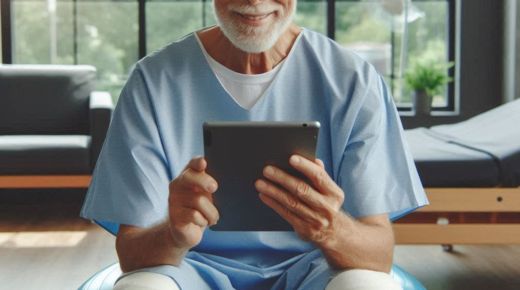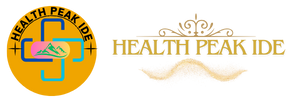How Technology is Changing Stroke Rehabilitation

Stroke rehabilitation is a critical aspect of recovery for individuals who have experienced a stroke, a condition that can lead to significant physical and cognitive impairments. As technology continues to advance, it is playing an increasingly vital role in enhancing stroke rehabilitation. From innovative therapies to cutting-edge equipment, technological solutions are transforming the landscape of stroke recovery, improving outcomes and offering new hope to patients and their families.
Understanding Stroke Rehabilitation
Following a stroke, rehabilitation aims to help individuals regain lost functions, improve mobility, and enhance their overall quality of life. The rehabilitation process often involves a multidisciplinary team, including physiotherapists, occupational therapists, speech therapists, and medical professionals. Traditional rehabilitation methods include physical therapy exercises, occupational therapy for daily living skills, and speech therapy for communication difficulties.
While these traditional methods are effective, technology is revolutionizing stroke rehabilitation by providing new tools and approaches that can enhance the recovery experience.
The Role of Technology in Stroke Rehabilitation1. Robotics and Exoskeletons
One of the most exciting developments in stroke rehabilitation technology is the use of robotics and exoskeletons. These devices can assist individuals in performing movements they may struggle to execute independently due to muscle weakness or paralysis.
Robotic devices can be used in physical therapy sessions to guide patients through repetitive movements, helping to rebuild muscle strength and improve coordination. Exoskeletons, wearable robotic suits, enable stroke survivors to walk with assistance, facilitating gait training and improving mobility. These technologies allow patients to engage in more intensive and repetitive therapy, which is crucial for neuroplasticity—the brain’s ability to reorganize itself and form new connections.
2. Virtual Reality (VR) Therapy
Virtual reality is making waves in stroke rehabilitation by creating immersive environments that engage patients in rehabilitation exercises. VR therapy allows patients to practice movements and activities in a safe and controlled virtual space, providing real-time feedback and motivation.
For example, patients can participate in virtual games that require them to reach, grasp, and manipulate objects, enhancing their motor skills and coordination. This gamified approach not only makes rehabilitation more enjoyable but also encourages patients to practice regularly, leading to improved outcomes.
3. Telehealth and Remote Monitoring
Telehealth technology has transformed how stroke rehabilitation is delivered, particularly in the wake of the COVID-19 pandemic. Remote monitoring and virtual therapy sessions allow patients to receive rehabilitation services from the comfort of their homes, reducing barriers to access.
Through telehealth platforms, therapists can conduct assessments, provide guidance on exercises, and monitor progress using video calls. Patients can benefit from personalized care while avoiding the challenges of transportation and time constraints. This approach is particularly beneficial for individuals living in rural or underserved areas, ensuring that they receive the support they need.
4. Wearable Technology
Wearable technology, such as smartwatches and fitness trackers, has become increasingly popular in stroke rehabilitation. These devices can monitor various health metrics, including heart rate, activity levels, and sleep patterns, providing valuable data for both patients and healthcare providers.
Wearables can also help individuals set and track rehabilitation goals, encouraging them to stay active and engaged in their recovery. By collecting real-time data, healthcare providers can adjust treatment plans based on individual progress and needs, ensuring a more personalized approach to rehabilitation.
5. Artificial Intelligence (AI) and Machine Learning
Artificial intelligence is revolutionizing stroke rehabilitation by enabling more precise assessments and personalized treatment plans. AI algorithms can analyze data from various sources, including wearable devices and rehabilitation equipment, to identify patterns and trends in a patient’s recovery.
Machine learning can help predict outcomes and recommend specific exercises tailored to an individual’s unique needs. This data-driven approach allows therapists to optimize rehabilitation strategies, ultimately improving the effectiveness of therapy and enhancing recovery.
6. Innovative Stroke Therapy Platforms
Several innovative platforms have emerged to support stroke rehabilitation. These platforms integrate various technologies, such as virtual reality, gamification, and telehealth, into comprehensive rehabilitation solutions.
For instance, some platforms offer interactive exercises that can be done at home, allowing patients to engage in rehabilitation outside of traditional therapy sessions. These solutions often include progress tracking features, enabling patients and healthcare providers to monitor improvements over time.
Technology is transforming stroke rehabilitation, providing new tools and methodologies that enhance recovery processes. From robotics and virtual reality to telehealth and AI, these advancements are improving patient outcomes and promoting greater independence.
As the landscape of stroke robotic rehabilitation continues to evolve, it is essential for healthcare providers, patients, and families to embrace these innovative solutions. By integrating technology into rehabilitation programs, individuals recovering from stroke can access more effective therapies, stay motivated, and ultimately achieve better quality of life. The future of stroke recovery looks promising, with technology paving the way for a more hopeful and empowered rehabilitation journey.
It is very important to do the necessary tests during pregnancy to avoid as many future problems as possible. Your obstetrician-gynecologist will advise you on what is needed according to your needs.



